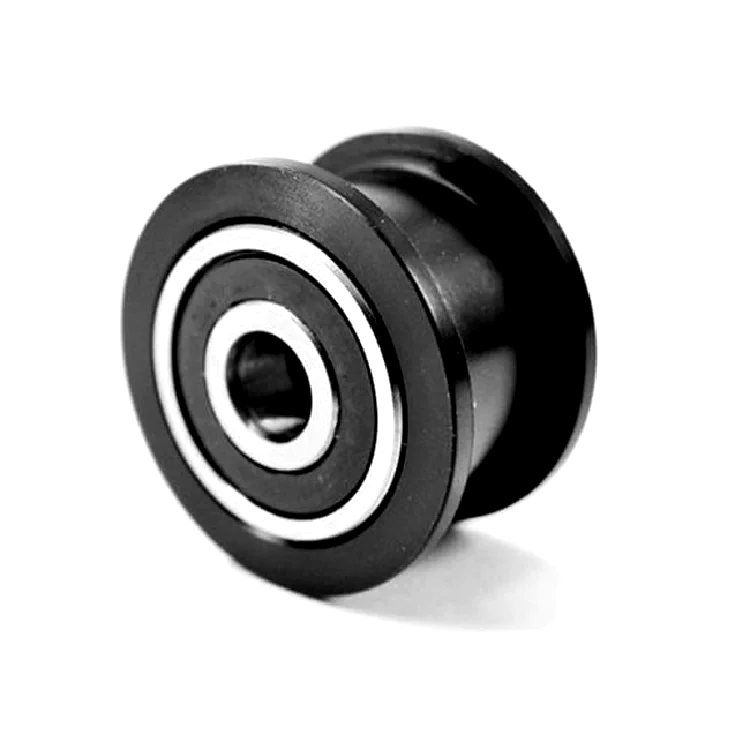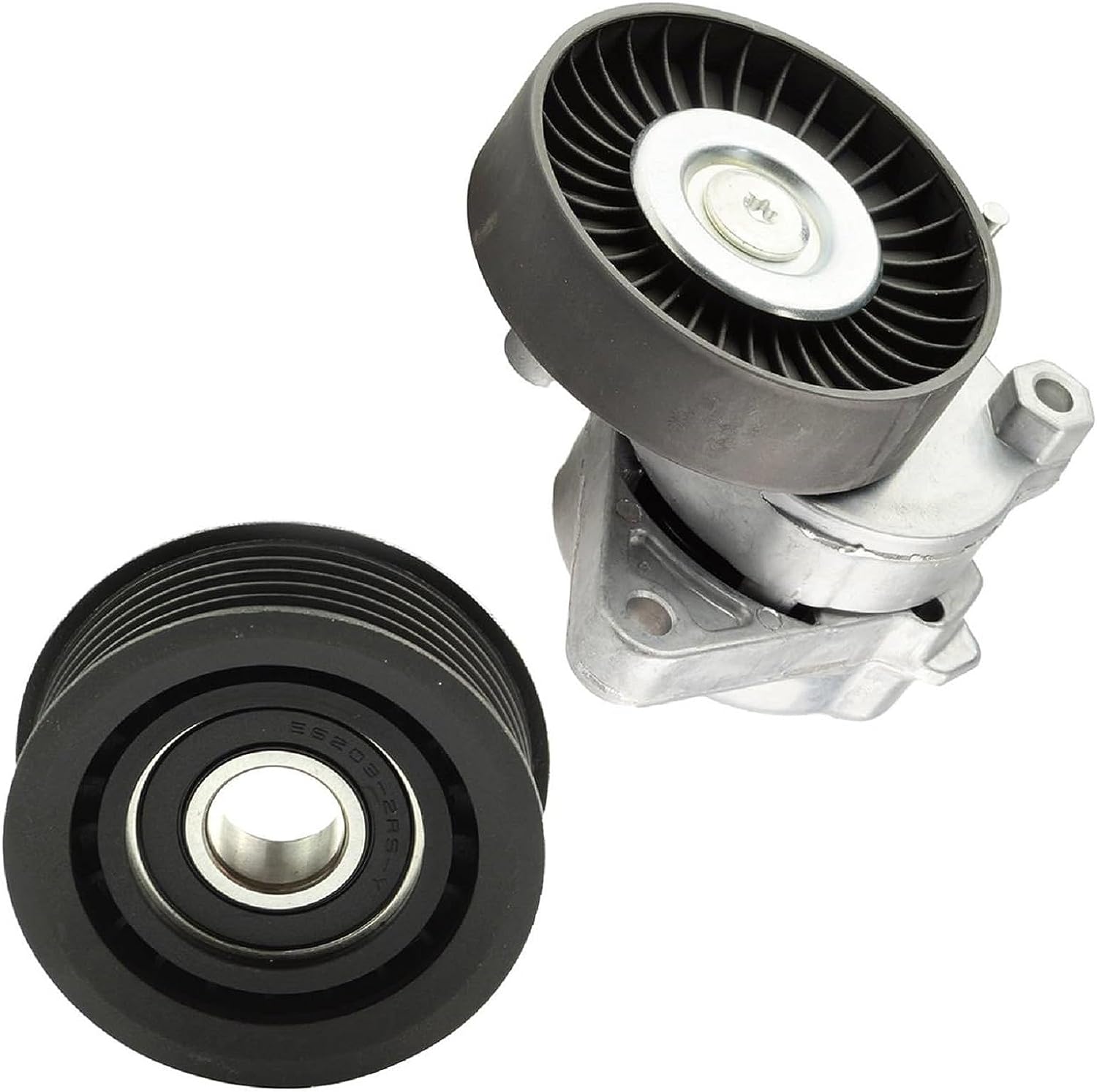Product Description
IHF Backside Tension Type Flat Idler Timing Pulley
Main Features:
1. OEM/ODM tooth number from 14 to 72 timing pulley
2. Material can be designed by customer requirement
3. High torque series S2M S3M S5M S8M P2M P3M P5M P8M
4. Normal torque series MXL XL L H
5. High precision drive series 2GT 3GT 5GT 8YU
6. Light load drive series T5 T10
7. Heave load drive series AT5 AT10
8. Clamping Timing Pulleys S3M S5M S8M
Product Parameters
| Product | standard timing belt pulley & idler pulley |
| Customized | OEM, drawings or samples customized |
| Teeth type | Normal Torque Drive Type:MXL,XL,L,H,XH,XXH High Torque Drive Type:S2M,S3M,S5M,S8M,HTD2M,HTD3M,HTD5M,HTD8M,P2M,P3M,P5M,P8M High Precision Position Drive Type:2GT,3GT,5GT,8YU Light Load Drive Type:T5,T10,T20 Heavy Load Drive Type:AT5,AT10,AT20 |
| Basic shape | Type A,Type B,Type D,Type E,Type F,Type K |
| Adaption | Adapt to 1/4 inch,5/16 inch,1/2 inch, 3/8inch, 2/25inch, 1/5inch belt |
| surface treatment | Natural color anodizing,Black anodizing,Hard anodizing,Ni-plating,Blackening |
| Material | 6061(aluminum),S45C(45# steel),SUS304(Stainless steel) |
| Bore | Pilot bore, Taper bore and Customized bore. |
| Tolerance Control | Outer diameter ±0.005mm Length dimension ±0.05mm |
| Standard | DIN, ISO/GB, AGMA, JIS |
| Teeth Accuracy | DIN Class 4, ISO/GB Classs 4, AGMA Class 13, JIS Class 0 |
| Weight | Max 15Tons |
| testing equipment | projecting apparatus,salt spray test,durometer,and coating thickness tester,2D projector |
| producing equipment | CNC machine,automatic lathe machine,stamping machine,CNC milling machine,rolling machine,lasering,tag grinding machine etc. |
| Machining Process | Gear Hobbing, Gear Milling, Gear Shaping, Gear Broaching,Gear Shaving, Gear Grinding and Gear Lapping |
| Application industry | Robot industry,Medical industry,Making machine industry,Automation industry,3C industry equipment,Packaging industry,UAV industry,New energy industry. |
Company Profile
Packaging & Shipping
| lead time | 10-15 working days as usual,30days in busy season,it will based on the detailed order quantity |
| Delivery of samples | by DHL,Fedex,UPS,TNT,EMS |
FAQ
| Main markets | Southeast Asia, North America, Eastern Europe, Mid-East, West Europe |
| How to order | *You send us drawing or sample |
| *We carry through project assessment | |
| *We give you our design for your confirmation | |
| *We make the sample and send it to you after you confirmed our design | |
| *You confirm the sample then place an order and pay us 30% deposit | |
| *We start producing | |
| *When the goods is done,you pay us the balance after you confirmed pictures or tracking numbers | |
| *Trade is done,thank you! |
| Certification: | CE, ISO |
|---|---|
| Pulley Sizes: | Type A |
| Manufacturing Process: | Casting |
| Material: | Stainless Steel |
| Surface Treatment: | Polishing |
| Application: | Chemical Industry, Grain Transport, Mining Transport, Automation Equipment |
| Samples: |
US$ 10/Piece
1 Piece(Min.Order) | |
|---|
| Customization: |
Available
| Customized Request |
|---|
What is the significance of proper alignment and tensioning in idler pulley systems?
Proper alignment and tensioning in idler pulley systems are of utmost significance for their optimal performance and longevity. Here’s a detailed explanation of the significance of proper alignment and tensioning:
1. Efficient Power Transmission:
Proper alignment and tensioning ensure efficient power transmission in idler pulley systems. When the belts or chains are correctly aligned with the pulleys, there is maximum contact and engagement, minimizing slippage and power loss. Optimal tensioning ensures that the belts or chains are appropriately tensioned, allowing for efficient transfer of power from the driving pulley to the driven pulley. Efficient power transmission improves the overall performance and productivity of the system.
2. Reduced Wear and Tear:
Proper alignment and tensioning help reduce wear and tear on belts, chains, pulleys, and other system components. Misalignment or inadequate tension can cause excessive stress, uneven loading, and premature wear. Misaligned belts or chains can rub against pulleys or adjacent components, leading to accelerated wear and potential damage. By ensuring proper alignment and tensioning, the system components experience minimal friction, resulting in reduced wear and extended service life.
3. Noise Reduction:
Proper alignment and tensioning contribute to noise reduction in idler pulley systems. Misaligned belts or chains can generate noise due to rubbing or vibration. Inadequate tensioning can cause belts or chains to slip or vibrate, resulting in noise generation. By aligning the belts or chains accurately and applying the correct tension, the system operates smoothly and quietly, enhancing the comfort and usability of the equipment.
4. System Stability and Reliability:
Proper alignment and tensioning promote system stability and reliability. When belts or chains are aligned correctly, they remain securely engaged with the pulleys, minimizing the risk of disengagement or derailing. Optimal tensioning ensures that the belts or chains maintain consistent tension, preventing slack or excessive tightness that could compromise system operation. A stable and reliable idler pulley system is crucial for maintaining continuous and trouble-free operation in various applications.
5. Extended Component Lifespan:
Proper alignment and tensioning help extend the lifespan of system components, including belts, chains, pulleys, and bearings. Misalignment and improper tensioning exert additional stress on these components, leading to accelerated wear and potential failure. By maintaining proper alignment and tension, the load is evenly distributed, reducing the strain on individual components and promoting their durability. Extended component lifespan translates to reduced maintenance costs and increased overall system productivity.
6. Safety:
Proper alignment and tensioning contribute to the safety of idler pulley systems. Misaligned belts or chains can pose safety hazards by coming into contact with surrounding equipment or personnel. Inadequate tensioning can result in sudden belt or chain disengagement, causing unexpected machine shutdowns or potential injuries. By ensuring proper alignment and tensioning, the risk of accidents or equipment damage is minimized, enhancing the safety of the working environment.
Overall, proper alignment and tensioning are vital for the efficient operation, reliability, longevity, noise reduction, and safety of idler pulley systems. Regular inspection, adjustment, and maintenance of alignment and tensioning parameters are essential to optimize system performance and maintain the integrity of the components involved.
What types of belts or chains are typically guided by idler pulleys?
Idler pulleys are commonly used to guide and support various types of belts or chains in mechanical systems. Here’s a detailed explanation of the types of belts or chains that are typically guided by idler pulleys:
1. V-Belts:
Idler pulleys are frequently used to guide V-belts. V-belts have a trapezoidal cross-section and are commonly used in applications that require high torque transmission, such as automotive engines, industrial machinery, and HVAC systems. Idler pulleys help maintain proper tension and alignment of V-belts, ensuring efficient power transmission and preventing slippage.
2. Flat Belts:
Flat belts, as the name suggests, have a flat, rectangular cross-section. They are used in applications where a wide contact surface area is required, such as conveyor systems, printing machines, and textile machinery. Idler pulleys guide and support flat belts, helping to maintain tension, alignment, and proper engagement with other pulleys or components.
3. Timing Belts:
Timing belts, also known as synchronous belts, have teeth on the inner surface. They are commonly used in applications that require precise power transmission, such as automotive engines, robotics, and precision machinery. Idler pulleys play a critical role in guiding and tensioning timing belts, ensuring accurate synchronization between the driving and driven components.
4. Chain Drives:
Idler pulleys are also used to guide and support chains in chain drive systems. Chains are widely used in applications that require high load carrying capacity and durability, such as motorcycles, bicycles, and industrial machinery. Idler pulleys help maintain proper tension, alignment, and engagement of the chain, ensuring smooth and efficient power transmission.
5. Serpentine Belts:
Serpentine belts are wide, multi-ribbed belts commonly used in automotive engines to drive various components, such as the alternator, power steering pump, and air conditioning compressor. Idler pulleys are integral in guiding and tensioning serpentine belts, ensuring proper operation and preventing belt slippage.
It’s important to note that the specific type of belt or chain guided by idler pulleys will depend on the application and the requirements of the mechanical system. Factors such as load capacity, speed, torque, and environmental conditions will influence the selection of the appropriate belt or chain type and the corresponding idler pulleys.
How does an idler pulley contribute to the proper tensioning of belts and chains?
An idler pulley plays a crucial role in maintaining proper tension in belts and chains within mechanical systems. Let’s explore how an idler pulley contributes to the proper tensioning:
1. Taking Up Slack:
When a belt or chain is installed in a system, there may be some initial slack or looseness. The idler pulley is strategically positioned to take up this slack by applying tension to the belt or chain. It helps to eliminate any excessive play and ensures that the belt or chain remains properly tensioned.
2. Compensation for Thermal Expansion and Wear:
Belts and chains can experience thermal expansion during operation due to changes in temperature. Additionally, over time, belts and chains may stretch or wear out. The presence of an idler pulley allows for compensation of these factors by providing an adjustable point of tension. The idler pulley can be adjusted to maintain the desired tension, compensating for any expansion or wear that may occur.
3. Preventing Belt or Chain Slippage:
If a belt or chain is not properly tensioned, it can slip or derail from the pulleys or sprockets it is meant to drive. This can lead to loss of power transmission, reduced efficiency, and potential damage to the system. The idler pulley applies the necessary tension to keep the belt or chain securely engaged with the other pulleys or sprockets, preventing slippage and ensuring reliable power transfer.
4. Maintaining Belt or Chain Alignment:
Proper alignment of belts and chains is essential for smooth operation and efficient power transmission. The idler pulley helps maintain alignment by guiding the belt or chain along the correct path and preventing it from wandering or deviating from the intended route. This contributes to reduced wear, noise, and vibration in the system.
5. Absorbing Shock and Reducing Vibrations:
An idler pulley can also help absorb shock and reduce vibrations within the belt or chain system. By providing a point of contact and tension, the idler pulley helps to dampen any sudden or excessive movements, resulting in smoother operation and reduced stress on the system components.
It’s important to note that the proper tensioning of belts and chains requires careful consideration of factors such as the manufacturer’s specifications, load requirements, and operating conditions. The idler pulley, along with other tensioning devices in the system, should be adjusted and maintained to ensure optimal performance and longevity of the belts and chains.
editor by CX
2023-12-01




